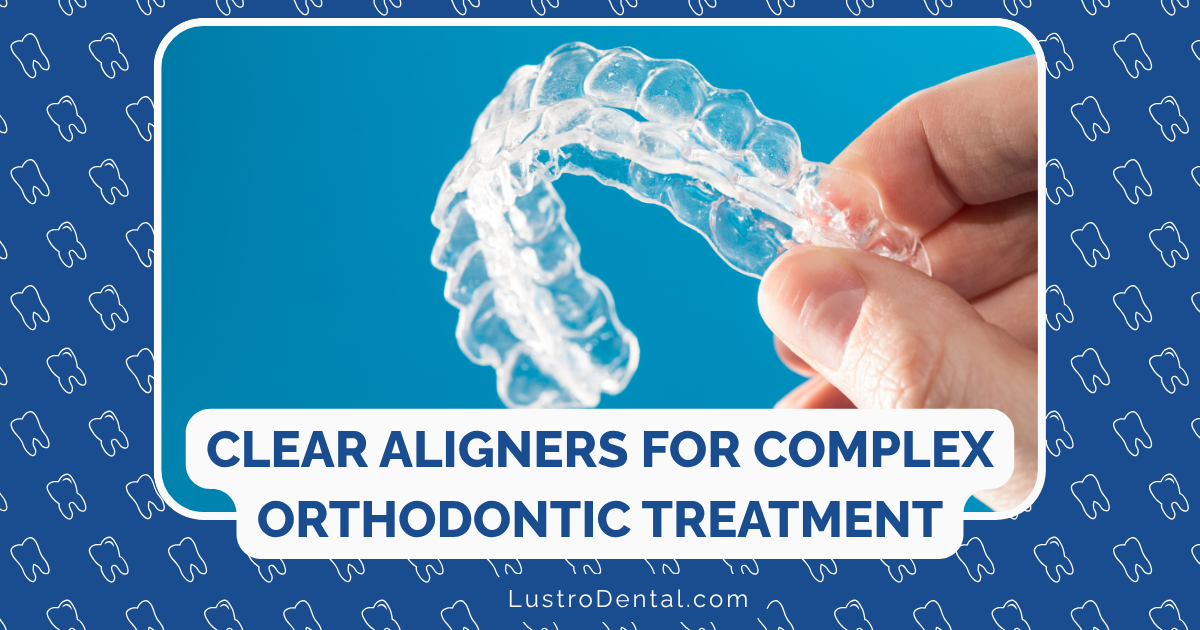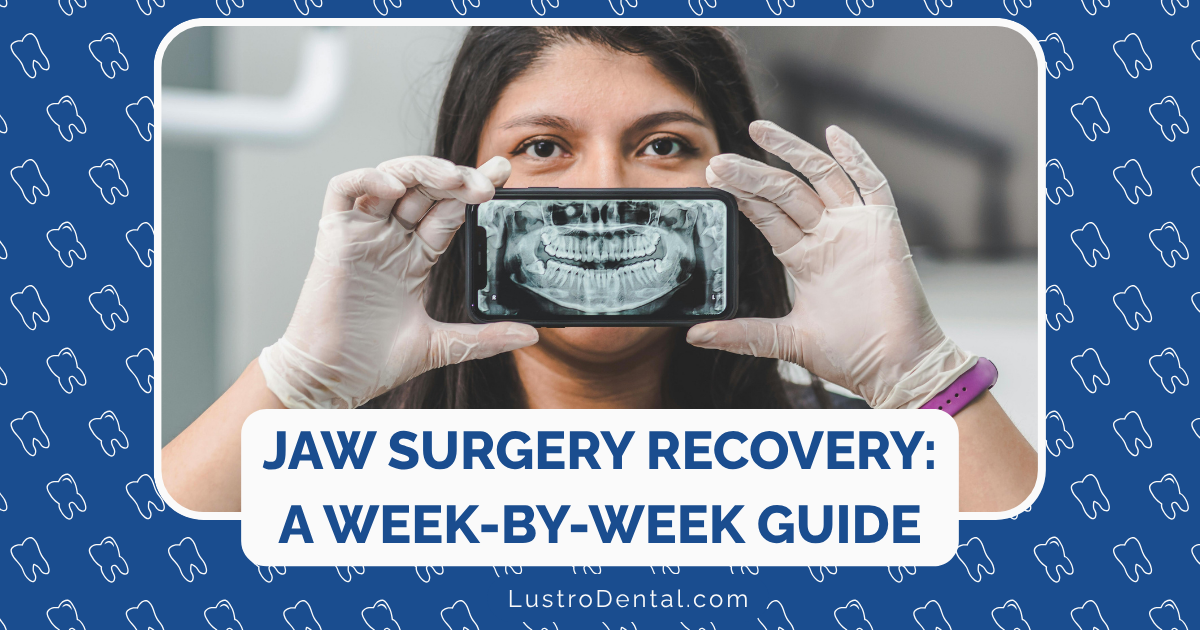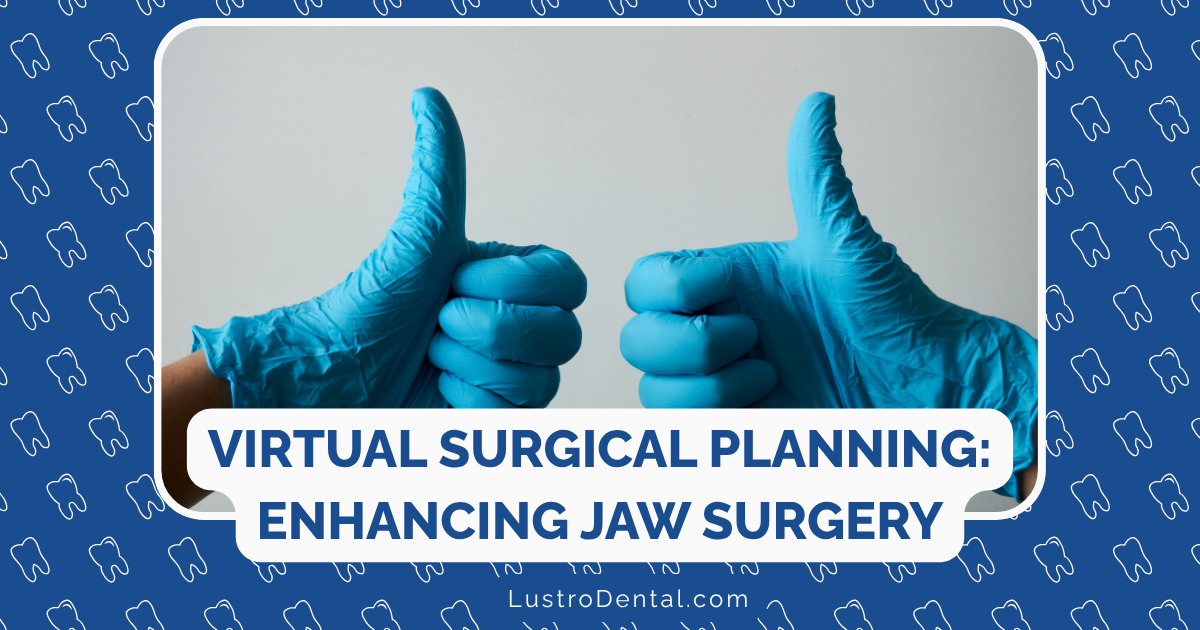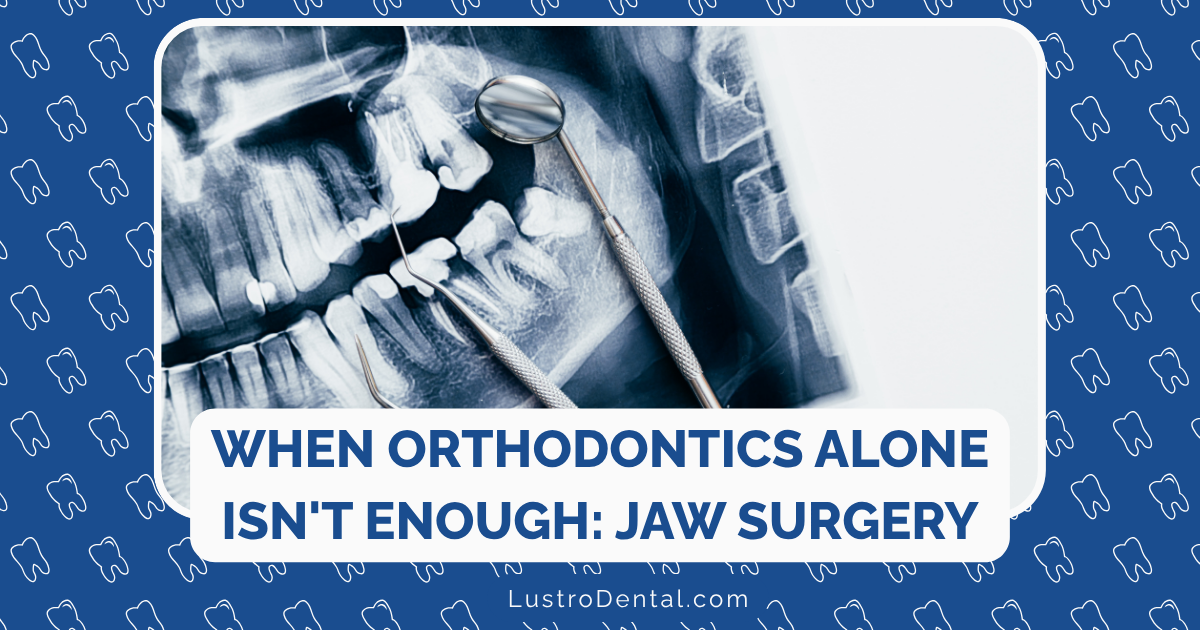Complex Cases with Clear Aligners: When They Work and When They Don’t

When clear aligners first entered the orthodontic scene in the late 1990s, they were primarily recommended for mild cases—slight crowding, minor spacing issues, and simple aesthetic improvements. Fast forward to 2025, and the landscape has changed dramatically. Advanced materials, sophisticated attachments, and AI-driven treatment planning have expanded the scope of what’s possible with these transparent trays.
But as an orthodontist who’s treated thousands of patients with both traditional braces and clear aligners, I can tell you that despite impressive technological advances, clear aligners still aren’t a universal solution for every orthodontic challenge.
In this comprehensive guide, I’ll explore the capabilities and limitations of clear aligners for complex orthodontic cases, providing an evidence-based assessment of when they work effectively and when traditional approaches might be more appropriate. This isn’t about promoting one treatment modality over another—it’s about helping patients and practitioners make informed decisions based on clinical realities.
Defining “Complex” in Orthodontics
Before diving into specific scenarios, let’s clarify what constitutes a “complex” orthodontic case. Complexity in orthodontics typically involves one or more of these factors:
Skeletal Discrepancies
Significant misalignments between the upper and lower jaws that may require surgical intervention or growth modification.
Severe Malocclusions
Pronounced bite issues including deep bites (excessive vertical overlap), open bites (lack of vertical overlap), crossbites (transverse discrepancies), or severe overjet/underjet.
Extraction Cases
Treatment plans requiring the removal of teeth to create space for alignment or to correct bite relationships.
Significant Rotations
Teeth rotated more than 45 degrees from their ideal position.
Vertical Movement Challenges
Cases requiring significant extrusion (moving teeth downward) or intrusion (moving teeth upward).
Multiple Issues
Cases combining several moderate problems that collectively create complex treatment scenarios.
According to a 2024 classification system published in the Journal of Clinical Orthodontics, orthodontic cases can be categorized into four levels of difficulty: easy, moderate, difficult, and challenging. This framework helps set realistic expectations for treatment outcomes with different modalities.
The Biomechanics: Why Some Movements Are Challenging for Aligners
To understand the limitations of clear aligners, we need to appreciate the biomechanical principles at work.
The “Pushing Force” Limitation
Clear aligners primarily work through a “pushing force” created by the elastic deformation of the aligner material. This differs fundamentally from the “pulling force” that can be generated with brackets and wires.
Dr. Sarah Johnson, an orthodontist at Metropolitan Orthodontics, explains: “Aligners essentially push against the crown of the tooth, creating a tipping force rather than the bodily movement that’s often needed in complex cases. This is why certain movements—particularly extrusion, rotation of round teeth, and root control—can be challenging with aligners alone.”
The Predictability Factor
Research published in the American Journal of Orthodontics and Dentofacial Orthopedics in 2024 found that the predictability of tooth movements with clear aligners varies significantly:
- Rotation of rectangular teeth: 70-80% predictable
- Molar distalization: 70-88% predictable
- Incisor intrusion: 45-55% predictable
- Rotation of round teeth (canines, premolars): 30-40% predictable
- Extrusion of any teeth: 25-35% predictable
- Root torque control: 30-45% predictable
These percentages represent the average percentage of the planned movement that is actually achieved clinically—a critical consideration when planning complex treatments.
Complex Case Categories: When Aligners Work and When They Don’t
Let’s examine specific complex orthodontic scenarios and assess the effectiveness of clear aligners in each:
1. Deep Bite Correction
Deep bites (excessive vertical overlap of the front teeth) are among the most common complex issues orthodontists treat.
When Aligners Work:
- Mild to moderate deep bites (up to 50% overbite)
- Cases where deep bite is primarily due to supraerupted lower incisors
- Patients with good compliance who will wear aligners consistently
- When combined with bite ramps on the lingual (tongue side) of upper incisors
When Aligners Don’t Work as Well:
- Severe deep bites (>50% overbite)
- Cases requiring significant molar extrusion (only about 30% predictable with aligners)
- Deep bites with skeletal components requiring growth modification
- Patients with strong masticatory muscles that resist bite opening
The Evidence: A 2025 systematic review in the Journal of Dental Research found that clear aligners achieve less than 50% of the planned overbite reduction in deep bite cases. The study concluded that fixed appliances remain the preferred treatment method for significant deep bite correction.
Dr. Michael Chen of Advanced Orthodontic Solutions notes: “When treating deep bites with aligners, I typically program twice the amount of correction I actually want to achieve. Even then, we often need to add midcourse corrections to reach our goals.”
2. Open Bite Treatment
Open bites (lack of vertical overlap between front teeth) present unique challenges for any orthodontic system.
When Aligners Work:
- Dental open bites without skeletal components
- Mild to moderate anterior open bites (1-3mm)
- Cases where open bite is due to habits like tongue thrust that can be simultaneously addressed
- When combined with posterior bite blocks to control molar eruption
When Aligners Don’t Work as Well:
- Skeletal open bites with increased lower face height
- Severe open bites (>4mm)
- Cases requiring significant molar intrusion
- Open bites in growing patients who need growth modification
The Evidence: A 2024 comparative study in the European Journal of Orthodontics found that clear aligners were effective for dental open bites under 3mm but showed significantly less predictable results for larger open bites or those with skeletal components.
“Open bites are paradoxically both easier and harder to treat with aligners,” explains Dr. Lisa Patel. “The full occlusal coverage prevents unwanted eruption, which helps maintain posterior tooth position, but this same property makes it difficult to achieve the selective eruption often needed for complete correction.”
3. Extraction Cases
Extraction cases—where teeth are removed to create space—represent a significant test of any orthodontic system’s capabilities.
When Aligners Work:
- Premolar extraction cases with mild to moderate crowding
- Extraction cases requiring primarily crown tipping rather than root movement
- Patients with excellent compliance (22+ hours of wear time daily)
- When used with appropriate attachments for anchorage control
When Aligners Don’t Work as Well:
- Cases requiring precise root parallelism at extraction sites
- Treatments needing maximum anchorage control
- Incisor extraction cases requiring complex space closure
- Extraction cases in patients with periodontal compromise
The Evidence: A 2023 systematic review in the American Journal of Orthodontics and Dentofacial Orthopedics comparing extraction cases treated with aligners versus fixed appliances found that aligners took an average of 4-6 months longer to complete treatment and showed less predictable results in achieving proper root angulation at extraction sites.
A recent study published in 2025 found that clear aligners were less effective at leveling the curve of Spee in extraction cases compared to non-extraction cases, with a significantly larger discrepancy between predicted and actual changes.
“Extraction cases with aligners require meticulous planning and often more aligners than initially anticipated,” notes Dr. Robert Johnson. “I typically warn patients that we’ll likely need at least one set of refinements to achieve ideal results, particularly for root positioning.”
4. Severe Crowding and Rotations
Significant crowding and severely rotated teeth present substantial challenges for clear aligner therapy.
When Aligners Work:
- Moderate crowding (4-6mm per arch)
- Rectangular teeth with rotations under 45 degrees
- Cases where IPR (interproximal reduction) can create sufficient space
- When combined with optimized rotation attachments
When Aligners Don’t Work as Well:
- Severe crowding (>8mm per arch)
- Round teeth (canines, premolars) with rotations exceeding 45 degrees
- Cases requiring significant arch expansion
- Rotations of teeth with short clinical crowns
The Evidence: Research from the University of Washington published in 2024 found that for severely rotated canines (>45 degrees), clear aligners achieved only 35% of the planned correction, compared to 82% with fixed appliances.
“The physics of applying rotational force with a thermoplastic material has inherent limitations,” explains Dr. Jennifer Lee. “While attachments help, they can’t fully replicate the direct control provided by brackets and wires for severe rotations.”
5. Skeletal Discrepancies
Skeletal discrepancies—misalignments between the upper and lower jaws—represent some of the most challenging orthodontic cases.
When Aligners Work:
- Mild Class II (overbite) cases in growing patients when combined with mandibular advancement features
- Mild Class III (underbite) cases amenable to dental compensation
- As part of surgical orthodontic treatment for pre-surgical decompensation and post-surgical finishing
- For camouflage treatment in patients who decline surgical options
When Aligners Don’t Work as Well:
- Moderate to severe skeletal discrepancies requiring significant dental compensation
- Growth modification cases requiring precise control of tooth movement and jaw growth
- Cases requiring complex tooth movements to compensate for skeletal issues
- Asymmetric skeletal problems requiring differential tooth movements
The Evidence: A 2025 paper in the Journal of Oral and Maxillofacial Surgery demonstrated that clear aligners can be effectively combined with orthognathic surgery for complex skeletal cases, but noted that the pre-surgical decompensation phase often required more refinements compared to traditional fixed appliances.
“For surgical cases, aligners offer excellent aesthetic options during treatment,” notes maxillofacial surgeon Dr. William Chen. “However, achieving precise pre-surgical tooth positions sometimes requires a hybrid approach with partial fixed appliances in specific areas.”
Factors That Influence Success with Complex Cases
Beyond the specific type of malocclusion, several factors significantly impact the likelihood of success with clear aligners in complex cases:
1. Attachment Design and Placement
The strategic use of composite attachments on teeth dramatically improves aligner grip and control. Recent innovations include:
- Optimized attachments specifically designed for particular tooth movements
- G-shaped attachments for improved rotation control
- Rectangular attachments for better torque expression
- Step attachments for enhanced extrusion capability
“Attachment design has evolved tremendously,” explains Dr. Michael Chen. “We now have a library of evidence-based attachments for specific movements that have significantly expanded what we can accomplish with aligners.”
2. Patient Compliance
The removable nature of aligners makes patient compliance a critical factor—perhaps the most important one for complex cases.
- Complex movements require 22+ hours of daily wear
- Consistent aligner changes at appropriate intervals
- Proper use of auxiliaries like elastics or bite ramps
- Regular monitoring to catch tracking issues early
Research published in the Journal of Clinical Orthodontics found that patients with complex cases who wore their aligners less than 20 hours daily took an average of 9 months longer to complete treatment compared to compliant patients.
3. Clinician Experience
The orthodontist’s expertise with clear aligner therapy significantly impacts outcomes for complex cases.
- Advanced training in aligner biomechanics
- Experience with similar cases and knowledge of predictability
- Skill in ClinCheck® modification and staging of movements
- Ability to identify and address tracking issues early
“There’s a steep learning curve with aligners for complex cases,” notes Dr. Lisa Patel. “What looks possible in the digital setup doesn’t always translate to real-world biology. Experienced providers know how to program overcorrection and stage movements in a biomechanically sound sequence.”
4. Hybrid Approaches
For many complex cases, a hybrid approach combining aligners with limited fixed appliances or auxiliaries yields the best results.
- Partial braces in specific areas requiring precise control
- Temporary anchorage devices (TADs) to enhance biomechanics
- Auxiliary springs or elastics to supplement aligner forces
- Phased treatment with different modalities for different treatment stages
“The future of orthodontics isn’t aligners versus braces—it’s using each tool for what it does best,” explains Dr. Robert Johnson. “Many of my most successful complex cases use aligners for the majority of treatment with strategic use of fixed appliances in limited areas.”
Case Studies: Complex Aligner Treatments in Practice
To illustrate when aligners work for complex cases and when they don’t, let’s examine some real-world examples:
Case 1: Successful Deep Bite Correction with Aligners
Patient: 32-year-old female with 60% overbite, moderate crowding, and Class I molar relationship
Treatment Approach:
- Clear aligners with anterior bite ramps
- Optimized attachments for incisor intrusion
- Programmed posterior expansion to create space
- 28 initial aligners followed by 14 refinement aligners
Outcome: Successful correction of deep bite to 20% overbite, aligned arches, and improved smile aesthetics. Treatment completed in 22 months.
Why It Worked: Despite the significant deep bite, this case succeeded because the patient had excellent compliance, the treatment plan incorporated bite ramps and strategic attachments, and the orthodontist programmed significant overcorrection of the incisor intrusion.
Case 2: Challenging Open Bite Requiring Hybrid Approach
Patient: 28-year-old male with 4mm anterior open bite, bimaxillary protrusion, and tongue thrust habit
Initial Treatment Approach: Clear aligners with posterior bite blocks and tongue spikes
Challenges Encountered: After 12 months of treatment, the open bite had only reduced by 1mm despite excellent compliance. The aligners struggled to achieve the necessary posterior intrusion and anterior extrusion.
Modified Approach: Transitioned to a hybrid treatment with aligners continuing on the lower arch but partial fixed appliances on the upper anterior teeth with extrusion elastics.
Outcome: Successful closure of open bite achieved after an additional 10 months of hybrid treatment.
Why Aligners Alone Didn’t Work: The severe open bite with active tongue thrust required more precise control of extrusion forces than aligners could provide. The hybrid approach allowed targeted extrusion mechanics while maintaining the aesthetic benefits of aligners for the majority of the treatment.
Case 3: Successful Premolar Extraction Case with Aligners
Patient: 25-year-old female with 9mm of crowding, Class II tendency, and protrusive profile requiring first premolar extractions
Treatment Approach:
- Extraction of all first premolars
- Clear aligners with optimized attachments for space closure
- Power arms and elastics for anchorage control
- Sequential space closure to maintain posterior relationships
Outcome: Successful alignment with appropriate space closure and improved profile. Treatment completed in 30 months with three rounds of refinements.
Why It Worked: Despite being an extraction case, success was achieved through careful staging of movements, strategic attachments, excellent patient compliance, and the orthodontist’s experience with similar cases. The patient also had favorable bone biology and tooth morphology.
The Future: Closing the Gap for Complex Cases
As we look toward the future, several innovations are helping to expand the range of complex cases that can be effectively treated with clear aligners:
Advanced Materials
Newer aligner materials with variable force application properties can deliver different forces to different teeth simultaneously, potentially improving complex movement predictability.
AI-Driven Treatment Planning
Artificial intelligence is improving treatment planning by analyzing thousands of similar cases to predict biological responses more accurately and suggest optimal attachment configurations.
Hybrid Systems by Design
Emerging systems are intentionally designed as hybrid approaches, seamlessly integrating aligners with fixed components for specific movements while maintaining aesthetic benefits.
Integrated Monitoring Technology
Remote monitoring systems with AI analysis can detect tracking issues earlier, allowing for prompt intervention before minor discrepancies become major problems.
Making the Decision: Clear Aligners or Traditional Braces for Complex Cases?
If you’re a patient with a complex orthodontic situation considering treatment options, here are key factors to discuss with your orthodontist:
Questions to Ask Your Orthodontist:
- Based on my specific case, what is the predictability of achieving my goals with aligners versus braces?
- What specific movements in my case might be challenging with aligners?
- Would a hybrid approach offer advantages for my particular situation?
- How many similar complex cases have you treated with aligners, and what were the outcomes?
- What would the contingency plan be if aligners don’t achieve the desired results?
- How might my treatment time differ between aligners and traditional braces?
Red Flags in Complex Cases:
Be cautious if a provider:
- Guarantees perfect results with aligners for very complex movements
- Dismisses potential limitations without discussing them
- Lacks experience with similar complex cases
- Cannot show examples of similar cases they’ve treated
- Doesn’t mention the possibility of refinements or mid-course corrections
Conclusion: A Balanced Perspective
Clear aligners have undoubtedly revolutionized orthodontics, and their capabilities continue to expand with technological advances. For many complex cases that would have required traditional braces a decade ago, aligners now offer a viable and aesthetically pleasing alternative.
However, physics, biology, and biomechanics still impose certain limitations. The most successful approaches to complex orthodontic treatment in 2025 often involve:
- Realistic expectations based on scientific evidence about movement predictability
- Strategic treatment planning that plays to the strengths of aligner therapy
- Judicious use of auxiliaries and attachments to enhance biomechanical control
- Consideration of hybrid approaches when appropriate
- Close monitoring and timely intervention when treatment isn’t progressing as planned
As Dr. Jennifer Lee summarizes: “The question isn’t whether aligners can treat complex cases—they often can. The better questions are: Is this the most efficient approach for this specific patient? Will aligners achieve the precision this case requires? And is the patient prepared for the commitment that complex aligner therapy demands?”
By approaching complex cases with this balanced perspective, orthodontists and patients can make informed decisions that lead to successful outcomes, whether that involves clear aligners, traditional braces, or a thoughtfully designed combination of both.
What has been your experience with complex orthodontic treatment? Share your story in the comments below!







